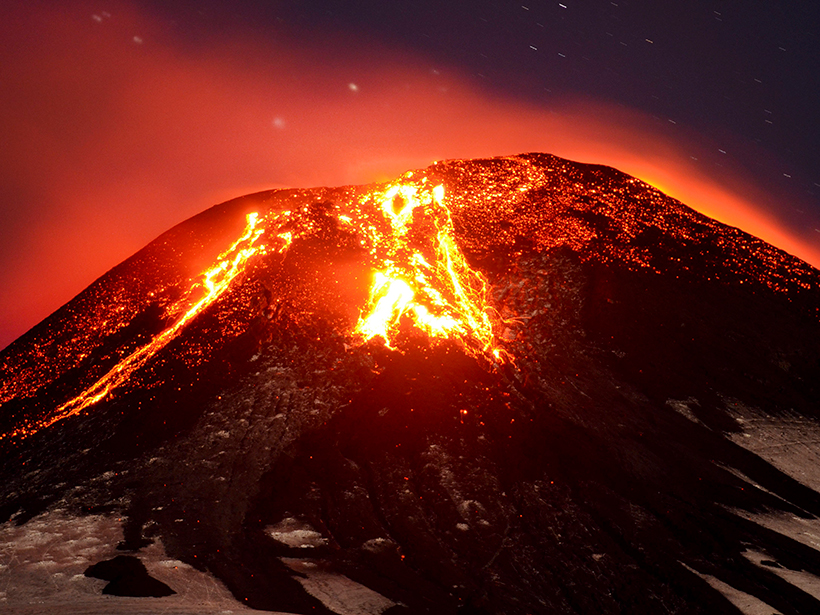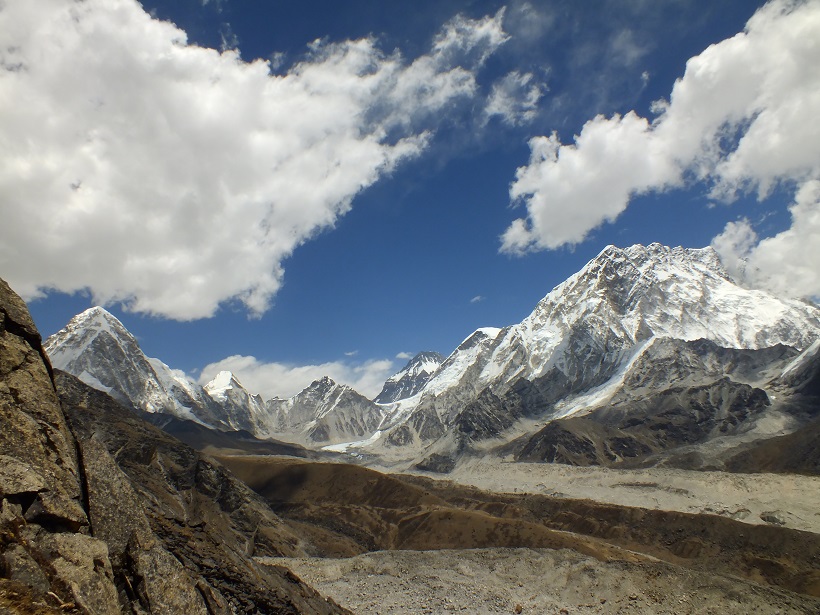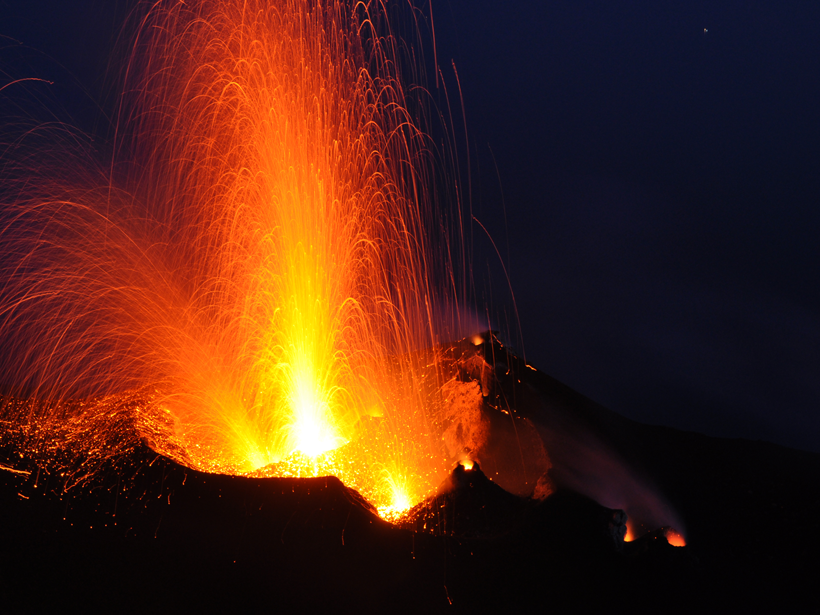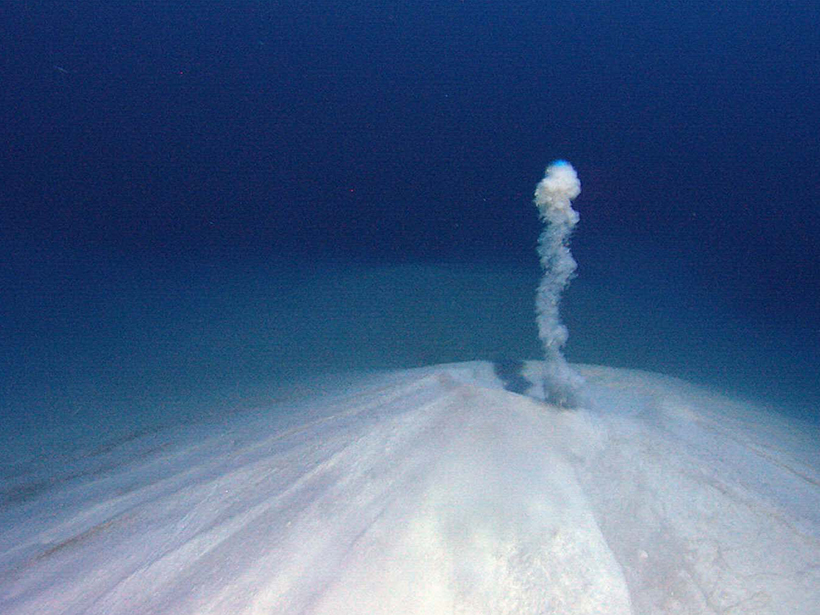Researchers test whether the changing composition of volcanic gas can signal a coming eruption in Chile’s Villarrica volcano.
Geochemistry, Geophysics, Geosystems
Competing Models of Mountain Formation Reconciled
The author of a prize-winning paper published in Geochemistry, Geophysics, Geosystems describes new insights into crustal mechanics and the formation of the Himalaya.
What Led to the Largest Volcanic Eruption in Human History?
A mineral-dating project at the Toba caldera in Indonesia sheds light on the science of supereruptions.
Explaining Why Some Paleomagnetic Results Fail
Reordering of mineral crystal lattice structures during laboratory heating may explain the frequent need to reject results of experiments that estimate the intensity of Earth's past magnetic fields.
Tracking Volcanic Bombs in Three Dimensions
A new method allows researchers to precisely track in three dimensions bits of fragmented magma as they are expelled in explosive volcanic eruptions.
Exploring Ancient Ocean Acidification in the Rock Record
Scientists studying Earth's ancient oceans use a new method to measure ocean acidification and its effect on extinction events.
Alteration Along the Alpine Fault Helps Build Seismic Strain
Detailed analysis of cores drilled through New Zealand's most dangerous on-land fault indicates that its permeability and strength are altered by mineral precipitation between seismic events.
Fingerprinting the Source of Fore-Arc Fluids
A new model tracks boron and other tracers in fluids expelled from subducting slabs to help identify the fluids' source regions and migration routes.
Deep Drilling Reveals Puzzling History of Campi Flegrei Caldera
Results show that caldera collapse attributed to a super eruption almost 40,000 years ago was smaller than what scientists expected. So what might have really happened?
A Significantly Hotter Mantle Beneath Iceland
Estimates of crystallization temperatures from four eruptions in northern Iceland offer improved constraints on the mantle's temperature beneath this anomalous divergent plate boundary.










